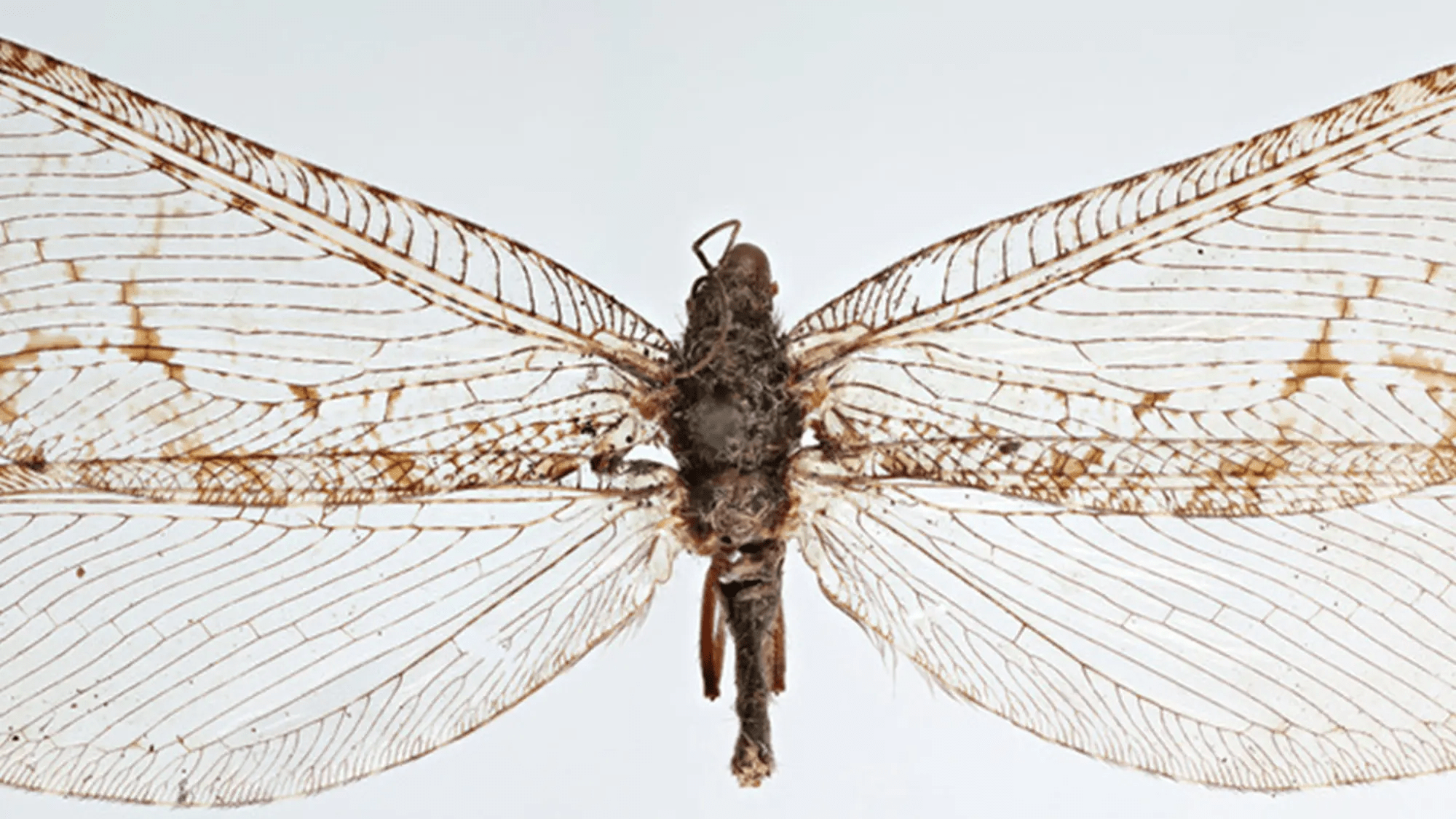

Picture it—you walk into a typical Walmart in Arkansas on a grocery run, but instead of a traditional Walmart greeter welcoming you in, you find an insect whose origins date back to the Jurassic Period. This sci-fi like story actually happened back in 2012 and luckily the person who spotted the insect is a bug expert.

“I remember it vividly, because I was walking into Walmart to get milk and I saw this huge insect on the side of the building,” Michael Skvarla, who was then a doctoral student at the University of Arkansas and is now the director of Penn State University’s Insect Identification Lab, said in a statement. “I thought it looked interesting, so I put it in my hand and did the rest of my shopping with it between my fingers. I got home, mounted it, and promptly forgot about it for almost a decade.”
[Related: Watch these tiny bugs catapult urine with their butts.]
The insect was a giant lacewing (Polystoechotes punctata), the first of its kind recorded in eastern North America in over 50 years and the first ever recorded in Arkansas. The moth relative with a one inch wingspan used to be widespread across the continent, but disappeared from eastern North America by the 1950s. With this find, scientists believe that there may be relic populations of this insect with roots back to the Jurassic (about 201.3 million to 145 million years ago) yet to be discovered.
The creature is described in a study published late last year in the journal Proceedings of the Entomological Society of Washington. Skvarla is a co-author on the paper.
In the study, the team describes how the insect was originally misidentified, and how students in one of Skvarla’s online courses helped re-identify the specimen.
“We were watching what Dr. Skvarla saw under his microscope and he’s talking about the features and then just kinda stops,” Codey Mathis, a doctoral candidate in entomology at Penn State, said in a statement. “We all realized together that the insect was not what it was labeled and was in fact a super-rare giant lacewing. I still remember the feeling. It was so gratifying to know that the excitement doesn’t dim, the wonder isn’t lost. Here we were making a true discovery in the middle of an online lab course.”
To confirm, Skvarla and his colleagues performed molecular DNA analyses on the specimen and revealed that it was in fact a giant lacewing.
The discovery could reveal a larger story about biodiversity in North America and changing environment since the giant lacewing was spotted in the urban area of Fayetteville, Arkansas. Skvarla says that the explanations for the giant lacewing’s disappearance from North America are varied and mostly a mystery. Scientists hypothesize that it may have disappeared due to increasing artificial light, pollution, and urbanization, the suppression of forest fires in the eastern part of North America since they rely on post-fire environments to live. Even the introduction of non-native predators like ground beetles may have had an effect.
[Related: Eyeless army ants chomped their way through Europe millions of years ago.]
“Entomology can function as a leading indicator for ecology,” Skvarla said. “The fact that this insect was spotted in a region that it hasn’t been seen in over half a century tells us something more broadly about the environment.”
The city of Fayetteville lies within the Ozark Mountains, which the team says is a suspected biodiversity hotspot. According to Skvarla, dozens of endemic species, including 68 species of insects, are known to live in these mountains and at least 58 species of plants and animals have highly disjunct populations with representatives in the region.
However, the mystery of how the elusive bug arrived on the outer facade of a Walmart remains. They believe that because it was found on the side of a well-lit building, it was likely attracted to the lights
“It could have been 100 years since it was even in this area — and it’s been years since it’s been spotted anywhere near it. The next closest place that they’ve been found was 1,200 miles away, so very unlikely it would have traveled that far,” said Skvarla.
